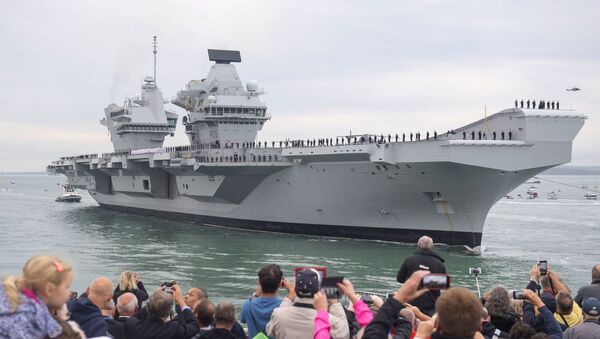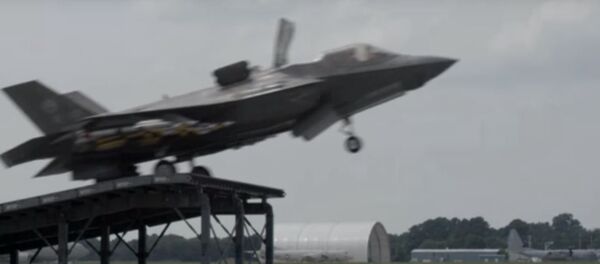The 70,000-ton HMS Queen Elizabeth, the largest ship ever built by the Royal Navy, has a lot of practice handling helicopters, but so far the handful of F-35B Joint Strike Fighters delivered to the British military haven't made their way to their future home on the carrier.
In fact, the last time a jet took off or landed vertically on a British carrier — which the B variant of the F-35 can do — was in 2010, when the the last British Aerospace Harrier IIs were retired.
"At the heart of the Maritime Task Group, the aircraft carrier is well protected and sustained, ready to operate around the world as a potent and exceptionally flexible instrument of our foreign policy," the Queen Elizabeth's commanding officer, Capt. Jerry Kyd, said on August 18 in a Ministry of Defense press release. "These first F-35B embarked trials in a UK aircraft carrier are not only key to future operational success, but represent an iconic moment for the modern Royal Navy."
The US Marine Corps F-35Bs will come from the Integrated Test Force, a unit of both British and American pilots that is based out of Patuxent River Naval Air Station in Lexington Park, Maryland, Business Insider noted. Three British pilots and one American pilot will conduct 500 takeoff and landing tests on the British carrier over 11 weeks, UK Secretary of State for Defense Gavin Williamson told the publication.
The Queen Elizabeth has been in Portsmouth, England, since May, undergoing an extensive refit to prepare for F-35B operations.
"With over a thousand helicopter deck landings already under our belt, we're developing more expansive clearances for helicopters than we have ever seen before," Rear Adm. Keith Blount, the Royal Navy's assistant chief of naval staff for aviation, amphibious capability and carriers, said in a press statement in April. "Next up are the jets, and the ship is being fitted with all the kit and communication systems required to ensure the aircraft and carrier can work together as a system. This is highly technical and time-consuming stuff and our sailors, airmen and shipyard workers are doing a great job in piecing it all together."
Among the upgrades installed have been the US-made AN/SPN-41/41A Instrument Carrier Landing System, a ship-mounted computer and radar apparatus that helps aircraft computers guide the plane in for a landing; a new flight deck lighting array to handle the F-35B's rolling vertical landings; and the application of a thermal metal spray to the ship's flight deck to handle the direct jet blast from the F-35B's engines, which turn to face downward during vertical takeoffs and landings, USNI noted.
"As the US' biggest partner in the F-35 program, we jointly own test jets which are on track to fly off the deck of our new aircraft carrier later this year," a Ministry of Defense spokesman said in a statement, noting that the training will "strengthen our special relationship with US forces."



